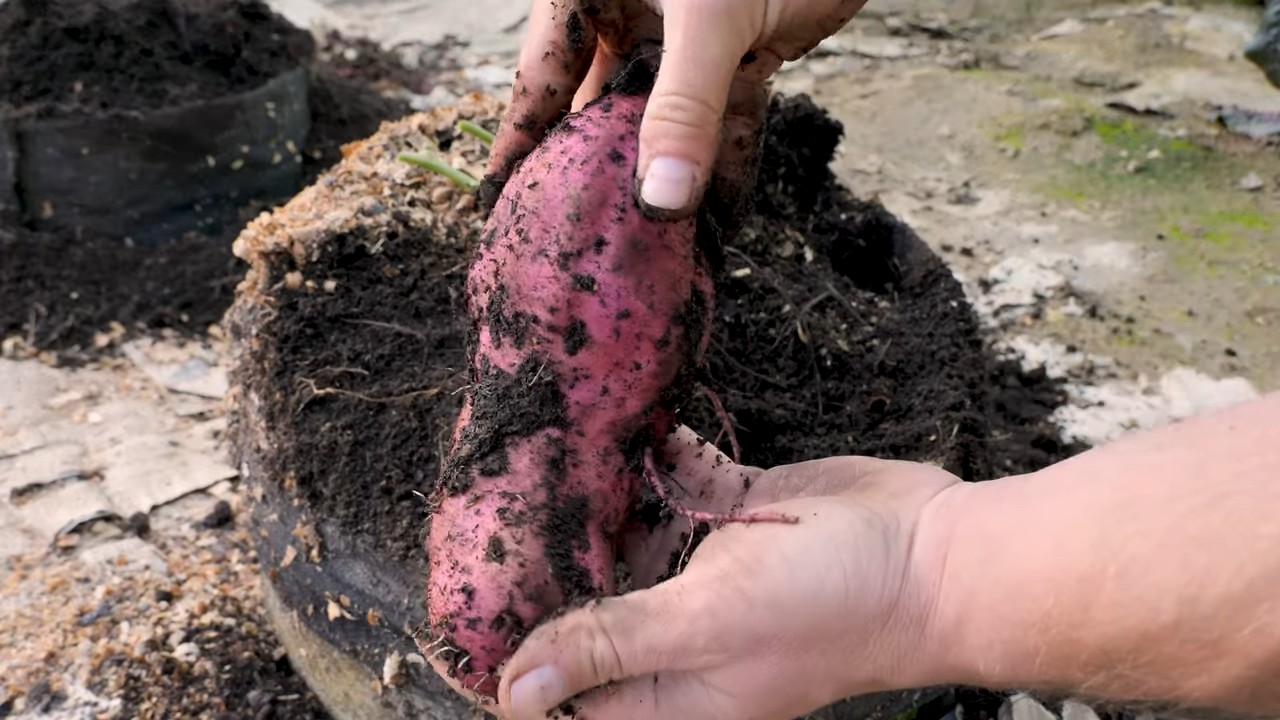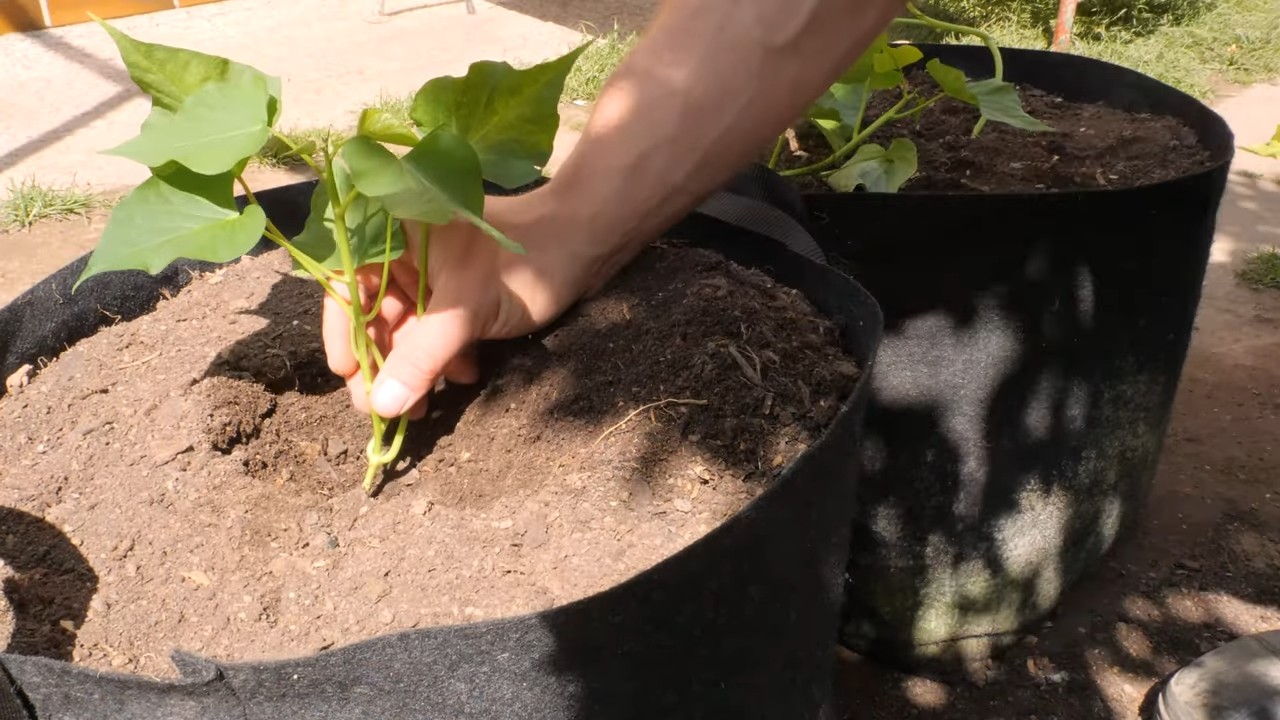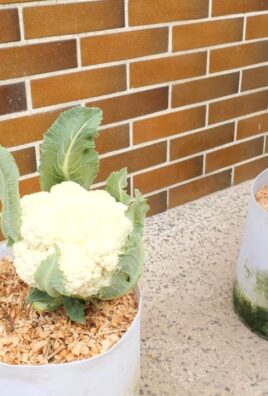Container Sweet Potatoes: Imagine harvesting a bounty of vibrant, orange sweet potatoes right from your own patio! Forget sprawling fields and back-breaking labor; growing these nutritional powerhouses in containers is easier than you think. This DIY guide will unlock the secrets to cultivating your own sweet potato harvest, even if you’re short on space.
Sweet potatoes have a rich history, dating back thousands of years in Central and South America. They were a staple food for the Incas and other ancient civilizations, and their cultivation gradually spread across the globe. Today, they’re celebrated for their delicious flavor and impressive health benefits, packed with vitamins, minerals, and antioxidants.
Why should you try growing container sweet potatoes? Well, for starters, it’s incredibly rewarding! There’s nothing quite like the satisfaction of nurturing a plant from slip to harvest. But beyond the personal fulfillment, container gardening offers a practical solution for urban dwellers and those with limited garden space. Plus, it gives you complete control over the growing environment, minimizing pests and diseases. I’m excited to share these simple yet effective tricks and hacks that will transform your balcony or backyard into a thriving sweet potato haven. Let’s get started!

Growing Sweet Potatoes in Containers: A Beginner’s Guide
Hey there, fellow gardening enthusiasts! I’m so excited to share my experience with growing sweet potatoes in containers. It’s a surprisingly easy and rewarding project, even if you don’t have a sprawling backyard. Trust me, the taste of homegrown sweet potatoes is unbeatable! Let’s dive in.
Choosing the Right Container and Soil
Before we get our hands dirty, let’s talk about the essentials: the container and the soil. These are crucial for a successful sweet potato harvest.
* Container Size: This is key! Sweet potatoes need room to grow their tubers. I recommend a container that’s at least 20 gallons in size. Think large plastic tubs, half whiskey barrels, or even grow bags. The bigger, the better, honestly. A smaller container will restrict root growth and result in smaller potatoes.
* Drainage: Excellent drainage is a must. Sweet potatoes don’t like soggy feet. Make sure your container has plenty of drainage holes. If you’re using a plastic tub, you might need to drill a few extra.
* Soil Mix: Forget regular garden soil. It’s too heavy and compacts easily. Instead, opt for a well-draining potting mix. I like to create my own mix using equal parts:
* Compost: Adds nutrients and improves drainage.
* Peat Moss (or Coco Coir): Retains moisture without becoming waterlogged.
* Perlite (or Vermiculite): Improves drainage and aeration.
Getting Started: Sprouting Slips
Sweet potatoes don’t grow directly from seeds. We need to start with “slips,” which are sprouts that grow from the sweet potato itself. You can buy slips online or at your local garden center, but it’s much more fun (and cheaper!) to grow your own.
1. Choose Your Sweet Potato: Select a healthy, organic sweet potato from the grocery store or farmer’s market. Organic is important because non-organic potatoes may be treated to prevent sprouting.
2. Prepare the Potato: There are two main methods for sprouting:
* Water Method: Suspend the sweet potato in a jar or glass of water, with the bottom half submerged. You can use toothpicks to hold it in place.
* Soil Method: Bury the sweet potato horizontally in a container filled with moist potting mix, leaving the top exposed.
3. Provide Warmth and Light: Place the jar or container in a warm, sunny location. A windowsill works perfectly.
4. Wait Patiently: This is the hardest part! It can take several weeks for slips to appear. Keep the water level consistent and the soil moist.
5. Harvest the Slips: Once the slips are 6-8 inches long, gently twist or cut them off the sweet potato.
6. Root the Slips: Place the slips in a glass of water, making sure the bottom inch or two is submerged. Roots should develop within a week or so. Change the water every couple of days.
Planting Your Sweet Potato Slips
Now that we have our rooted slips, it’s time to plant them in our containers.
1. Prepare the Container: Fill your chosen container with the well-draining potting mix we discussed earlier, leaving a few inches of space at the top.
2. Plant the Slips: Dig small holes in the soil, about 4-6 inches apart. Gently place the rooted slips into the holes, burying the roots and the bottom part of the stem.
3. Water Thoroughly: Water the newly planted slips well to help them settle in.
4. Mulch (Optional): Add a layer of mulch, such as straw or wood chips, around the base of the plants to help retain moisture and suppress weeds.
Caring for Your Sweet Potato Plants
Sweet potatoes are relatively low-maintenance, but they do need some attention to thrive.
* Sunlight: Sweet potatoes need at least 6-8 hours of direct sunlight per day. Choose a sunny spot for your container.
* Watering: Water regularly, especially during hot, dry weather. The soil should be consistently moist, but not waterlogged. Check the soil moisture by sticking your finger into the soil. If the top inch feels dry, it’s time to water.
* Fertilizing: Sweet potatoes are heavy feeders. Fertilize every 2-3 weeks with a balanced liquid fertilizer. Look for a fertilizer with an NPK ratio of around 10-10-10. Avoid fertilizers that are too high in nitrogen, as this can promote leafy growth at the expense of tuber development.
* Weeding: Keep the container free of weeds, which can compete with the sweet potatoes for nutrients and water.
* Pest Control: Sweet potatoes are generally pest-resistant, but keep an eye out for common garden pests like aphids and spider mites. If you spot any pests, treat them with an appropriate insecticide or insecticidal soap. I prefer using neem oil as a natural pest control option.
* Vine Management: Sweet potato vines can get quite long and sprawling. You can let them trail over the sides of the container, or you can provide a trellis or support for them to climb. Pruning the vines isn’t necessary, but you can trim them back if they become too unruly.
Harvesting Your Sweet Potatoes
This is the moment we’ve all been waiting for! Harvesting your homegrown sweet potatoes is incredibly satisfying.
1. Timing: Sweet potatoes are typically ready to harvest about 90-120 days after planting. The leaves will start to turn yellow and the vines will begin to die back.
2. Digging: Gently dig around the base of the plant, being careful not to damage the tubers. Use a garden fork or trowel to loosen the soil.
3. Lifting: Carefully lift the sweet potatoes out of the soil.
4. Curing: Curing is essential for developing the sweet flavor and improving the storage life of your sweet potatoes.
* Cleaning: Gently brush off any excess soil from the sweet potatoes. Avoid washing them, as this can promote rot.
* Curing Environment: Place the sweet potatoes in a warm, humid location (80-85°F and 85-90% humidity) for 7-10 days. A greenhouse or a warm, sunny room with a humidifier works well.
* Storage: After curing, store the sweet potatoes in a cool, dry, and well-ventilated place (55-60°F). They should keep for several months.
Troubleshooting
Even with the best planning, things can sometimes go wrong. Here are a few common problems and how to address them:
* Yellowing Leaves: This could be a sign of nutrient deficiency, overwatering, or underwatering. Check the soil moisture and fertilize if necessary.
* Slow Growth: This could be due to insufficient sunlight, poor soil, or cool temperatures. Make sure your plants are getting enough sunlight and that the soil is well-draining.
* Small Potatoes: This could be due to a small container, insufficient watering, or poor soil. Make sure you’re using a large enough container and that the soil is well-draining and nutrient-rich.
* Pests: Inspect your plants regularly for pests and treat them promptly.
Enjoying Your Harvest
Congratulations! You’ve successfully grown sweet potatoes in containers. Now it’s time to enjoy the fruits (or rather, tubers) of your labor. Sweet potatoes are incredibly versatile and can be used in a variety of dishes, from sweet potato fries and casseroles to soups and stews.
I hope this guide has inspired you to try growing sweet potatoes in containers. It’s a fun and rewarding project that anyone can do, regardless of their gardening experience. Happy gardening!

Conclusion
So, there you have it! Growing sweet potatoes in containers isn’t just a gardening trend; it’s a game-changer for anyone with limited space, a desire for fresh, homegrown produce, or simply a love for the unique flavor of these vibrant tubers. We’ve walked you through the entire process, from selecting the right container and soil to nurturing your plants and harvesting your bounty. But why is this DIY trick a must-try?
First and foremost, it’s incredibly rewarding. There’s something deeply satisfying about nurturing a plant from slip to harvest, knowing you’ve created something delicious and nutritious with your own two hands. Imagine the pride you’ll feel serving up sweet potato fries made from sweet potatoes you grew yourself!
Secondly, container gardening offers unparalleled control. You can easily move your containers to chase the sun, protect them from frost, and ensure they receive the perfect amount of water and nutrients. This level of control translates to healthier plants and a more abundant harvest. Plus, you’re less susceptible to soil-borne pests and diseases that can plague in-ground gardens.
Thirdly, and perhaps most importantly, growing sweet potatoes in containers allows you to enjoy fresh, organic produce even if you don’t have a traditional garden. Whether you live in an apartment with a balcony, a suburban home with a small patio, or even just have a sunny windowsill, you can experience the joy of homegrown sweet potatoes.
But the fun doesn’t stop there! This method is incredibly versatile. Want to experiment with different varieties? Go for it! Try growing Beauregard, Covington, or even the purple-fleshed Okinawan sweet potato. Each variety offers a unique flavor and texture, allowing you to tailor your harvest to your specific tastes.
Feeling adventurous? Consider companion planting. Marigolds can help deter pests, while herbs like basil and oregano can attract beneficial insects. Not only will this enhance the health of your sweet potato plants, but it will also add a touch of beauty and fragrance to your container garden.
And don’t forget about the foliage! Sweet potato vines are incredibly ornamental, with their lush, heart-shaped leaves adding a touch of tropical flair to any space. You can even choose varieties specifically bred for their ornamental value, such as ‘Blackie’ or ‘Margarita,’ which boast striking dark purple or chartreuse foliage, respectively. These varieties may not produce as many tubers, but they’ll certainly add a visual punch to your container garden.
Ultimately, the success of your container sweet potato garden depends on your willingness to experiment and adapt. Don’t be afraid to try new things, observe your plants closely, and adjust your approach as needed. Remember, gardening is a journey, not a destination.
So, what are you waiting for? Grab a container, some soil, and a few sweet potato slips, and get ready to embark on a rewarding gardening adventure. We’re confident that you’ll be amazed at what you can achieve.
We encourage you to try this DIY trick and share your experience with us! Post photos of your container sweet potato gardens on social media using #ContainerSweetPotatoes and tag us so we can see your progress. We’d love to hear your tips, tricks, and any challenges you encounter along the way. Let’s build a community of container sweet potato growers and inspire others to experience the joy of homegrown produce! Your success story could be the inspiration someone else needs to start their own gardening journey. Happy growing!
Frequently Asked Questions (FAQ)
What size container do I really need for growing sweet potatoes?
The ideal container size is at least 10 gallons, but 15-20 gallons is even better. Sweet potatoes need room to develop their tubers, and a larger container provides ample space for them to grow. A smaller container might result in smaller or fewer sweet potatoes. Think of it this way: the more room they have, the bigger and better your harvest will be. Also, ensure the container has drainage holes to prevent waterlogging, which can lead to root rot.
How often should I water my container sweet potatoes?
Watering frequency depends on several factors, including the weather, the size of your container, and the type of soil you’re using. Generally, you should water your sweet potatoes when the top inch of soil feels dry to the touch. During hot, dry weather, you may need to water them daily. In cooler, wetter weather, you may only need to water them every few days. The key is to keep the soil consistently moist but not waterlogged. Overwatering can be just as harmful as underwatering. A good rule of thumb is to stick your finger into the soil to check the moisture level before watering.
What kind of fertilizer should I use for my container sweet potatoes?
Sweet potatoes are heavy feeders, so they need regular fertilization to thrive. A balanced fertilizer with an NPK ratio of 10-10-10 or 14-14-14 is a good starting point. Apply the fertilizer according to the package directions, typically every 2-3 weeks. You can also supplement with organic fertilizers like compost tea or fish emulsion. Avoid using fertilizers that are too high in nitrogen, as this can promote excessive foliage growth at the expense of tuber development. Remember, you want to encourage the plant to put its energy into producing sweet potatoes, not just leaves.
How long does it take to grow sweet potatoes in containers?
Sweet potatoes typically take 90-120 days to mature, depending on the variety and growing conditions. You’ll know they’re ready to harvest when the foliage starts to yellow and die back. You can also gently dig around the base of the plant to check the size of the tubers. If they’re large enough for your liking, it’s time to harvest. Be careful not to damage the tubers when digging them up.
Can I grow sweet potatoes from store-bought sweet potatoes?
Yes, you can! This is a great way to save money and start your own sweet potato slips. Simply suspend a sweet potato in a jar of water, with the bottom half submerged. Place the jar in a warm, sunny location, and wait for sprouts to emerge. Once the sprouts are several inches long, you can gently twist them off and plant them in a pot of soil. Keep the soil moist and warm, and the slips will soon develop roots. However, be aware that some commercially grown sweet potatoes are treated to prevent sprouting, so success isn’t always guaranteed. Organic sweet potatoes are more likely to sprout.
What are some common pests and diseases that affect container sweet potatoes?
Sweet potatoes are generally relatively pest-resistant, but they can be susceptible to certain pests and diseases, such as aphids, flea beetles, and sweet potato weevils. Aphids can be controlled with insecticidal soap or neem oil. Flea beetles can be deterred with row covers or diatomaceous earth. Sweet potato weevils are more difficult to control, so prevention is key. Use disease-free slips and practice crop rotation. Fungal diseases like fusarium wilt and black rot can also affect sweet potatoes. Ensure good drainage and avoid overwatering to prevent these diseases. If you notice any signs of pests or diseases, take action promptly to prevent them from spreading.
Can I grow sweet potatoes in containers in colder climates?
Yes, you can, but you’ll need to take some precautions. Sweet potatoes are warm-weather crops and need at least 6-8 hours of sunlight per day. In colder climates, you may need to start your slips indoors several weeks before the last frost. You can also use a cold frame or greenhouse to extend the growing season. If you experience a late frost, cover your containers with blankets or tarps to protect the plants. Choose a sunny, sheltered location for your containers to maximize warmth and sunlight. With a little extra care, you can successfully grow sweet potatoes in containers even in colder climates.
How do I cure my sweet potatoes after harvesting them?
Curing sweet potatoes is essential for improving their flavor and storage life. After harvesting, gently brush off any excess soil and place the sweet potatoes in a warm, humid location (80-85°F and 85-90% humidity) for 7-10 days. This allows the skins to harden and any minor cuts or bruises to heal. After curing, store the sweet potatoes in a cool, dry, and well-ventilated location (55-60°F). Avoid storing them in the refrigerator, as this can cause them to develop a hard core. Properly cured and stored sweet potatoes can last for several months.




Leave a Comment